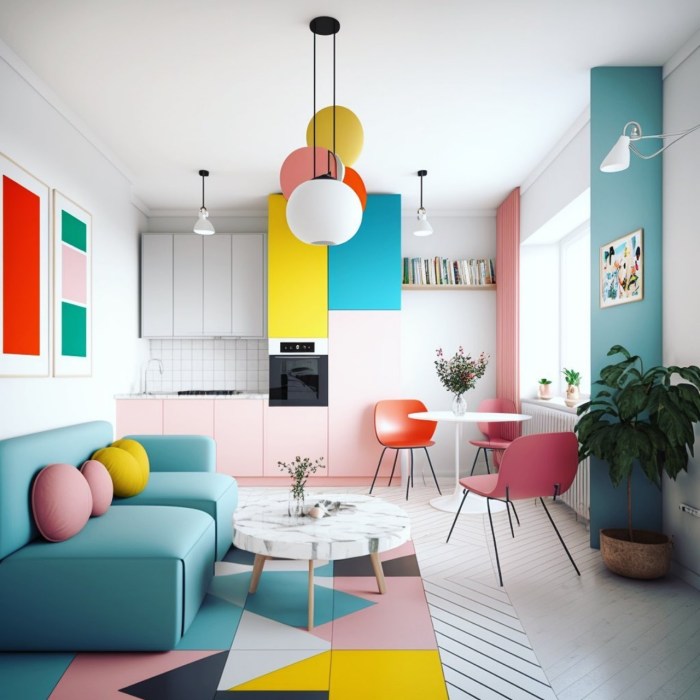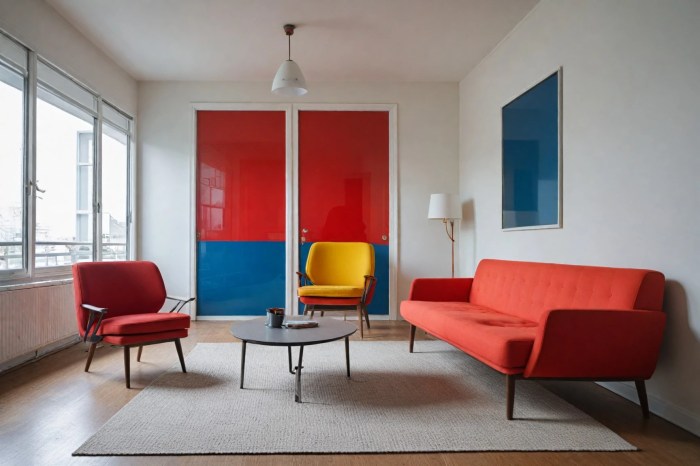Exploring the Impact of Bauhaus Design
As bauhaus design takes center stage, this opening passage beckons readers into a world crafted with good knowledge, ensuring a reading experience that is both absorbing and distinctly original. Bauhaus design, known for its revolutionary approach to art, architecture, and design, continues to influence modern aesthetics and creativity.
Let's delve into the essence of Bauhaus design and unravel its enduring legacy.
Bauhaus design emerged as a groundbreaking movement in the early 20th century, challenging traditional design norms and emphasizing functionality, minimalism, and geometric forms. This exploration will shed light on the key principles, characteristics, and applications of Bauhaus design across various fields.
Overview of Bauhaus Design
Bauhaus design refers to the influential German art school that operated from 1919 to 1933. It revolutionized the world of design, architecture, and art by merging craftsmanship with modern technology. The historical significance of Bauhaus design lies in its emphasis on functionality, simplicity, and the use of industrial materials.
Key Principles of Bauhaus Design
- Bauhaus design focused on the unity of art, craft, and technology to create practical and aesthetically pleasing objects.
- Minimalism was a key element of Bauhaus design, with an emphasis on clean lines, geometric shapes, and a lack of ornamentation.
- Form follows function was a central principle of Bauhaus design, prioritizing the purpose of an object over unnecessary decoration.
- The use of new materials, such as steel, glass, and concrete, was encouraged in Bauhaus design to embrace modern industrial methods.
- Bauhaus design aimed to make quality design accessible to the masses through mass production techniques.
Influence of Bauhaus Design on Modern Architecture and Design
- Bauhaus design laid the foundation for modern architecture, influencing the development of the International Style characterized by simplicity and functionality.
- The principles of Bauhaus design continue to inspire contemporary designers, with its focus on minimalism, functionality, and the use of industrial materials.
- Many iconic furniture pieces and buildings around the world bear the influence of Bauhaus design, showcasing its enduring impact on the design world.
Characteristics of Bauhaus Design

Bauhaus design is known for its unique characteristics that have influenced modern design principles. Here are some key features of Bauhaus design:
Simplicity and Functionality
Bauhaus design emphasizes simplicity and functionality in all aspects. Clean lines, minimalistic forms, and practicality are key elements of Bauhaus design.
Geometric Shapes
Geometric shapes play a significant role in Bauhaus design. Circles, squares, triangles, and other geometric forms are often used to create a harmonious and balanced composition.
Color Palette
The color palette commonly used in Bauhaus design consists of primary colors (red, blue, yellow) along with neutral tones (black, white, grey). These colors are used strategically to create contrast and visual interest.
Materials and Textures
Bauhaus design embraces the use of industrial materials such as steel, glass, and concrete. The focus is on the honesty of materials and the exploration of textures to create depth and visual impact in the design.
Bauhaus Design in Architecture
When it comes to Bauhaus design in architecture, the focus shifts to the application of the principles of simplicity, functionality, and harmony in creating buildings and structures that are not only aesthetically pleasing but also highly practical.
Integration of Form and Function
One of the key aspects of Bauhaus architecture is the seamless integration of form and function. This means that the design of a building should not only look good but also serve a specific purpose efficiently.
- The Bauhaus School building in Dessau, Germany, designed by Walter Gropius, is a prime example of Bauhaus architecture. Its clean lines, flat roof, and asymmetrical shapes showcase the school's commitment to combining form and function.
- The Fagus Factory in Alfeld, Germany, designed by Walter Gropius and Adolf Meyer, is another iconic Bauhaus structure. The use of glass walls, steel columns, and open floor plans exemplifies the Bauhaus principle of marrying form with function.
- The Barcelona Pavilion, designed by Ludwig Mies van der Rohe, is a masterpiece of modernist architecture that embodies Bauhaus design principles. Its minimalist approach, open spaces, and use of luxurious materials showcase the importance of form and function working together harmoniously.
Bauhaus Design in Interior Design

Bauhaus design principles have had a significant impact on interior design, emphasizing functionality, simplicity, and minimalism.
Furniture Design
One of the key aspects of Bauhaus interior design is the furniture that reflects the principles of the movement. Bauhaus furniture is characterized by clean lines, geometric shapes, and the use of materials such as steel, glass, and leather. Pieces are designed with a focus on practicality and efficiency, embodying the idea that form should follow function.
Form Follows Function
The concept of "form follows function" is central to Bauhaus interior design, meaning that the design of an object should primarily serve its intended purpose. This approach is evident in the furniture and layout of Bauhaus interiors, where every element is carefully considered for its practical use before aesthetics.
Bauhaus Design in Graphic Design
Bauhaus design had a significant impact on the world of graphic design, introducing a revolutionary approach that emphasized simplicity, functionality, and minimalism.
Impact of Bauhaus Design on Graphic Design Aesthetics
One of the key influences of Bauhaus design on graphic design aesthetics was the emphasis on clean lines, geometric shapes, and bold colors. This approach moved away from the elaborate and ornate designs of the past, paving the way for a more modern and streamlined aesthetic in graphic design.
Typography and Layout in Bauhaus Graphic Design
In Bauhaus graphic design, typography played a crucial role in conveying information effectively. Sans-serif fonts, grid-based layouts, and asymmetrical compositions were commonly used to create visually striking designs that were both functional and aesthetically pleasing.
Application of Bauhaus Design Principles in Branding and Logo Design
Bauhaus design principles such as simplicity, minimalism, and functionality have been widely applied in branding and logo design. Brands often use clean lines, geometric shapes, and bold colors to create memorable and timeless logos that reflect the ethos of Bauhaus design.
Wrap-Up

In conclusion, Bauhaus design remains a pivotal force in shaping contemporary design sensibilities. From architecture to graphic design, its influence resonates through the ages, inspiring new generations of creatives to push boundaries and think outside the box. By understanding the core tenets of Bauhaus design, we gain a deeper appreciation for its enduring relevance and innovative spirit.
Top FAQs
What are the key principles of Bauhaus design?
Bauhaus design principles revolve around simplicity, functionality, and the use of geometric shapes to create harmonious yet practical designs.
How did Bauhaus design influence modern architecture?
Bauhaus design revolutionized modern architecture by emphasizing clean lines, minimalism, and the integration of form and function in architectural structures.
What is the color palette commonly used in Bauhaus design?
The color palette in Bauhaus design typically includes primary colors such as red, blue, and yellow, along with neutral tones like black, white, and gray.




